My comment was for the passive version that was posted here.
Thanks, I missed that. Probably best we move any potentials to the another thread (like the Introducing Directiva one)...
My comment was for the passive version that was posted here.
ASR is a large community and it’s growing everyday. It’s not logical to accept an open development thread to work well. The noise to substance ratio will be too high. It is already high.Thanks, I missed that. Probably best we move any potentials to the another thread (like the Introducing Directiva one)...
ASR is a large community and it’s growing everyday. It’s not logical to accept an open development thread. The noise to substance ratio will be too high. It is already high.
May I suggest a closed thread where only the developers of a certain design can post and everyone else only reads/follows. From time to time a developer can cross comment a post from an open thread of a similar subject. This offers valid suggestions made by other members to be discussed in an orderly matter and possibly implemented to the final design. A sticky post may be kept to summarise the current or final state of the design which will also list the specs and parts. Naturally the developers can and I hope will accept more members to their “room”.
This is a pretty standard concept in open software development for a couple of decades. I believe if managed well this will help the developers as well as the interested members.
Well, if I am at the peak of mount stupid, then you can pull me down to the valley of despair by the design or measurements.
And again, my verdict is irrelevant to my level.
I can not say a soft thing to the Directiva "as a product", because it's so unfair to the "competitor" (if I can call them) such as Neumann, Genelec, etc., they are manufacturing well balanced, properly designed products.
Only midwits cite DKE. Because they cannot articulate their position/argument in a convincing fashion.
Well, the prototype was intended to show the potential of the design, both for the active and potential passive version. With six or more PEQ in the tweeter crossover, the result would no longer be feasible as a passive crossover (or only with very many notch filters) - Therefore, only as many PEQ as absolutely necessary.I was always curious why @ctrl didn't go all in since it's an active design. However now one might argue that losing around 3dB of sensitivity is not worth the improvements!
The problem is not so much the SeasDXT tweeter, but rather the not fully optimized baffle.he has some little points on the DXT problems
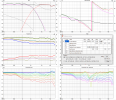
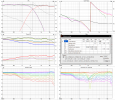
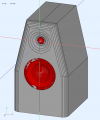
Nice work indeed.Well, the prototype was intended to show the potential of the design, both for the active and potential passive version. With six or more PEQ in the tweeter crossover, the result would no longer be feasible as a passive crossover (or only with very many notch filters) - Therefore, only as many PEQ as absolutely necessary.
I always find @Maiky76's tweaks very exciting, as they rise to the level of how well or not so well the various aspects of a speaker's dispersion work together.
But as said, one should not overestimate the preference score. However, I find it quite helpful in the development or optimization of a design, since it provides an unbiased ranking in addition to the differences one observed visually.
The problem is not so much the SeasDXT tweeter, but rather the not fully optimized baffle.
For small waveguides (anything under 180mm in diameter) that need to support the lowest possible crossover frequency, the waveguide should be designed specifically for the baffle and cabinet. Or less effectively the other way around.
This was discarded for Directiva, as has already been said, for the simplest possible build. Next, the baffle could have been optimized for the SeasDXT, but then no off-the-shelf cabinet could have been used, so this option was also discarded.
So the goal was to make the build as simple as possible, with a "shoebox-sized" off-the-shelf cabinet.
If you want, you can equip the Directiva with an optimized baffle or cabinet, like the ones A. Heissman used in his DXT concepts, or as presented here in the "Introducing Directiva" thread - then with newly designed crossover.
The Directiva project has further potential. Those who are not afraid of complicated manufacturing can still significantly improve the directivity, especially in the frequency range 4-10kHz.
Simulation of the measured Directiva Prototype:
View attachment 158141
Directiva with optimized cabinet:
View attachment 158142View attachment 158138
Significant improvement in horizontal dispersion, slight improvement in vertical dispersion.
The preference score confirms the visual impression.
If you want to know more about it, please discuss this in the "Introducing Directiva" thread. Just wanted to address statements that claim the SeasDXT waveguide was miserably developed by Seas.

 www.audiosciencereview.com
www.audiosciencereview.com
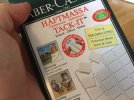
I understand that one of the criteria of this project is to use off-the-shelf enclosures but adding braces shouldn't be big ask to the DIY'er as long as we tell them where to place the braces. Any DIY shop will help you to cut a piece of of wood to length. The rest is glue.About resonances:
I have had good results using bitumen glued on the sides inside the loudspeaker cabinet in HYBRID. One should avoid having the same dimensions on the thickness of the mdf baffle and rear wall. At my investigations with bitumen, I reckognized that damping all the walls inside the cabinet only lowered the cabinet resonances and made it sound worse when listening to music. But damping half of the cabinet walls made the sound better, spreading the resonances in different frequencies - It could easily be heard on piano recordings that it was an improvement.
As luck would have it, I have a simulation of a 170mm waveguide on my hard drive - comparable to the one you used.During work on the active dsp loudspeaker HYBRID , and the original passive loudspeaker, we/they didnt find major benefits with changing the cabinet shape. Most of the diffractions from the tweeter, if using a waveguide, dissapears almost completely.
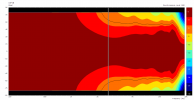
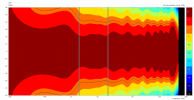
Great work Rick, your effort is appreciated. Now for a very similar DIY build but 3 bass drivers coupled with 2 mid drivers or thereabouts.
I am just curious if we implement our own DSP in particular one that is automated such as Audiolense or say something like Acourate would the results be similar? I get the benefit of minimal distortion throughout the chain with the choice of DAC's just not sure how the filters through DSP software will effect directivity...?
Some great research on bracing here:I understand that one of the criteria of this project is to use off-the-shelf enclosures but adding braces shouldn't be big ask to the DIY'er as long as we tell them where to place the braces. Any DIY shop will help you to cut a piece of of wood to length. The rest is glue.
During the development of our Silver5L we researched cabinet resonances extensively. We knew of the Matrix system that B&W had started to use on the first generation 800 series. The Matrix 801 was launched a few years before we started our project we understood the concept of enclosure resonance issues since early 80s having discussed it with my friend Siegfried RIP intensively after his seminal Wireless World article of 1978. By using a modified torn-arm/cartridge setup we investigated every part of our enclosure against a frequency sweep while using different type of damping materials. We built various marble enclosures and with the help of a friend who owned a foundry we even had a cast iron one made! That was the best by far but naturally it was not practical. We found out that braces work much better than any material that is practical. B&W was certainly on the right track.
The simplest test you can have is to tap on a speaker enclosure with your knuckle. If you hear a sound, the enclosure walls are resonating.
Thanks, but as I mentioned, much of the credit belongs to @ctrl. He has much more design experience than I.
You are suggesting an entirely different design, so how much Directiva r1 applies is rather limited IMO.
Thank you for these. As I said in my post research on managing cabinet resonance had been available for a long time. Any manufacturer disregarding this and still selling loudspeakers that have enclosure resonance is simply [fill your word here].Some great research on bracing here:
And resonances here:
It seems that lengthwise bracing across the longest dimension is the most effective, of the types tested.
It's not your preference which was criticised but the way you commented a very good DIY attempt here. By the way even the 2 way Genelec and Neumann have their small directivity problems.
Well what are your goals? My understanding of this tweeter is that the guide was optimized so that the tweeter face is still a standard size. I appears given that characteristic they are performing quite well.
Thank you for your kind words but sorry, I am not active in ASR because of the "thread starter" (you can see the reason here, I almost banned for mocking his "scientific attitude", you can add my so-called warning point and ban me by reporting my post! LOL) so I would not post ASR (maybe FB or DIYAudio) and for the very same reason, I can not participate to the ASR project.Acoustician, after you complete your tower speakers, I really do hope they sound amazing and measure well.
Share what you have done here.
If you really do have a high level of design skill, and you certainly may have it or be on your way to having it, then please contribute it here.
If the chosen tweeter and it it incorporated waveguide is a poor choice for a 6.5" 2 way, then suggest another option.
If no off the shelf option currently exists. Help the team make the speaker even better. Help design a great open source, printable waveguide that fits a great tweeter.
I'd love if I could design such a tweeter and waveguide myself.
In the original post #1:Well, I am posting my opinion to the Directiva "as a product" consistently, which hypothetically cost 400-500 grand a pair (according to the 1st post), that is KH310 or even close to 8341 money in some store.
Are you guys sure?
That is less than half than what a KH310 or 8341 cost which makes the rest of your post and comments invalid.Rick tells me that the cost for the components to build a pair is about US $1,300 to $1,400.
That is less than half than what a KH310 or 8341 cost which makes the rest of your post and comments invalid.
Which still don't make the price difference if chosen reasonably (the amplification modules of most monitors cost are far from expensive "highend").you're missing the cost of DSP and amplification that the Neumann KH310 has already included.
consumers usually don't have access to those affordable options, the cheapest equivalent thing would be the Hypex FA253. As Class A/B designs would require you to design dedicated cooling solutions and other Class D plate amplifiers are not really up to standard considering the quality of the actual speaker.Which still don't make the price difference if chosen reasonably (the amplification modules of most monitors cost are far from expensive "highend").

 www.audiosciencereview.com
www.audiosciencereview.com